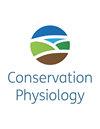The impacts of diel thermal variability on growth, development and performance of wild Atlantic salmon (Salmo salar) from two thermally distinct rivers
IF 2.6
3区 环境科学与生态学
Q2 BIODIVERSITY CONSERVATION
引用次数: 0
Abstract
Temperature in many natural aquatic environments follows a diel cycle, but to date, we know little on how diel thermal cycles affect fish biology. The current study investigates the growth, development and physiological performance of wild Atlantic salmon collected from the Miramichi and Restigouche rivers (NB, Canada). Fish were collected as parr and acclimated to either 16–21 or 19–24°C diel thermal cycles throughout the parr and smolt life stages. Both Miramichi and Restigouche Atlantic salmon parr grew at similar rates during 16–21 or 19–24°C acclimations. However, as smolts, the growth rates of the Miramichi (−8% body mass day−1) and Restigouche (−38% body mass day−1) fish were significantly slower at 19–24°C, and were in fact negative, indicating loss of mass in this group. Acclimation to 19–24°C also increased Atlantic salmon CTmax. Our findings suggest that both life stage and river origin impact Atlantic salmon growth and performance in the thermal range used herein. These findings provide evidence for local adaptation of Atlantic salmon, increased vulnerability to warming temperatures, and highlight the differential impacts of these ecologically relevant diel thermal cycles on the juvenile life stages in this species.昼夜温差对来自两条温差不同河流的野生大西洋鲑鱼(Salmo salar)的生长、发育和表现的影响
许多自然水生环境中的温度都遵循昼夜循环,但迄今为止,我们对昼夜热循环如何影响鱼类生物学知之甚少。本研究调查了从米拉米奇河和雷斯蒂古奇河(加拿大不列颠哥伦比亚省)采集的野生大西洋鲑鱼的生长、发育和生理表现。采集的鱼类为稚鱼,在稚鱼和幼鱼的整个生命阶段均适应 16-21 或 19-24°C 的昼夜热循环。在 16-21 或 19-24°C 的适应过程中,米拉米奇和雷斯提古什大西洋鲑幼鱼的生长速度相似。然而,作为幼鱼,米拉米奇鱼(体重-8%/天-1)和雷斯蒂古什鱼(体重-38%/天-1)在 19-24 摄氏度条件下的生长速度明显较慢,实际上为负值,表明该组鱼的体重有所下降。驯化到 19-24°C 也增加了大西洋鲑的 CTmax。我们的研究结果表明,生命阶段和河流起源都会影响大西洋鲑在本文使用的温度范围内的生长和表现。这些发现为大西洋鲑适应当地环境、增加对温度升高的脆弱性提供了证据,并强调了这些与生态相关的双日热循环对该物种幼鱼生命阶段的不同影响。
本文章由计算机程序翻译,如有差异,请以英文原文为准。
求助全文
约1分钟内获得全文
求助全文
来源期刊

Conservation Physiology
Environmental Science-Management, Monitoring, Policy and Law
CiteScore
5.10
自引率
3.70%
发文量
71
审稿时长
11 weeks
期刊介绍:
Conservation Physiology is an online only, fully open access journal published on behalf of the Society for Experimental Biology.
Biodiversity across the globe faces a growing number of threats associated with human activities. Conservation Physiology will publish research on all taxa (microbes, plants and animals) focused on understanding and predicting how organisms, populations, ecosystems and natural resources respond to environmental change and stressors. Physiology is considered in the broadest possible terms to include functional and mechanistic responses at all scales. We also welcome research towards developing and refining strategies to rebuild populations, restore ecosystems, inform conservation policy, and manage living resources. We define conservation physiology broadly and encourage potential authors to contact the editorial team if they have any questions regarding the remit of the journal.
 求助内容:
求助内容: 应助结果提醒方式:
应助结果提醒方式:


